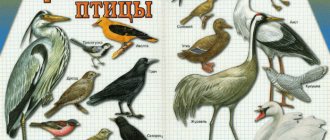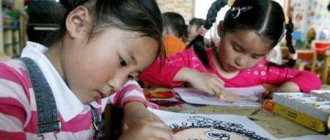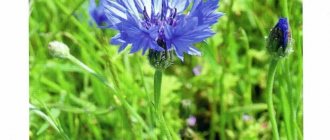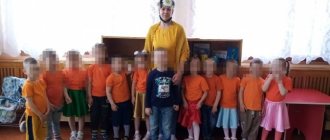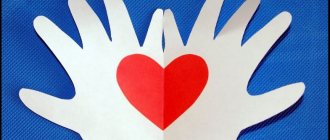Progress of the game:
Option 1: Children are offered pictures depicting children, adults, and elderly people. Make a family . How can you call these people in one word? Who lives in this family ?
Option 2: Do you think the family takes care of each other? It is necessary to identify who owns these items and explain why they decided so.
"Lotto"
Goal: Continue to introduce children to household responsibilities, help children feel like part of the family , and consolidate the names of their closest relatives.
Material: playing field, pictures with objects .
Progress of the game:
Open a photo album and invite your child to look at a family photo. Ask him a question, pointing in turn to the image of each family : “who is this?”
.
Ask the child what the name of his mother, father, grandmother, grandfather, etc. is. Invite him to tell him what kind of mother he is? (kind, beautiful, good)
.
What kind of dad is (tall, strict, handsome)
.
What grandmother? (old, kind)
.
Place a beautifully decorated box in front of your child and invite him to see what is hidden in it. (Carved heroes of the finger theater)
. Invite your child to play with the heroes of the finger theater.
This finger is grandpa, (bend your thumb)
This finger is grandma, (bend your index finger)
This finger is daddy, (bend your middle finger)
This finger is mommy, (bend your ring finger)
This finger is me, (bend your little finger)
This is my whole family ! (rotate your hands with your fingers apart)
At the end of the game, praise the child, saying that his family is really very friendly.
"My family "
Goal: To form an idea of the family using the example of people , heroes of fairy tales, using their substitutes.
Material: images of people and heroes from fairy tales.
Progress of the game:
Rules: “There is a family album in every house.
Like in a mirror we are reflected in it.
Even if we are not always beautiful -
But these photos are true.
The album is kept in our house,
Family photos are stored in an album.
Option 1: Children are offered pictures depicting children, adults, and elderly people. Make a family . How can you call these people in one word? Who lives in this family ?
Option 2: Do you think the family takes care of each other? It is necessary to identify who owns these items and explain why they decided so.
"Our friendly family "
Goal: Name family , understand and use the generalizing word “ family ”
.
Material: beautifully decorated box; finger theater, cut out to show finger performances.
Progress of the game:
to the children ”
.
He “quarreled with his mother”
because
“he didn’t want to put his toys away
. And now he doesn’t know how to make peace with his mother.
Educator. Guys, do you get offended by your family when they scold you? Relatives need to be loved and helped. How do you help your family at home? I have my grandmother’s box, you will put all your help in it, and we will give the box itself to the bear so that he also learns to help his mother and does not forget about it.
Children take turns talking about how they help their mother, father, brother, sister, grandmother, and grandfather at home, and put their stories in a chest. The little bear “thanks”
children for
the “magic box”
and returns to the forest to make peace with his mother and help her.
"Sweet Nothing"
Goal: To promote children’s ability to affectionately and lovingly address their family; develop coherent speech and thinking; cultivate love for your family .
Material: ball.
Progress of the game:
P1 - morning. In the morning, everyone wakes up, washes their face, and gets ready for work, school, or kindergarten.
P2 - day. During the day, adults work, children study at school, and in kindergarten children walk, study, play and sleep.
P3 - evening. In the evening, the whole family gathers at home , has dinner, children study homework, adults watch TV, and very young children play.
P4 - night. They sleep at night. The night is needed so that adults and children can rest and gain strength for the next day.
Q: Now imagine that at night the whole family wakes up and begins to get ready for work and so on.
«Family»
Goal: Formation in children of concepts about family .
Progress of the game:
Children stand in a circle and take turns naming their family . For example: “I live with my mother Natasha, father Sasha, brother Vladik. I have grandmother Lida, grandmother Vera, grandfather Grisha and grandfather Pavel.”
"Little Helpers"
Goal: To bring children to understand that they need to help their loved ones and give them their love; teach children to talk about their help in their family ; develop coherent speech and thinking.
Material: box, bear.
Progress of the game:
Q: Helping mom is good. Why?
Q: Arguing with your brother is bad. Why?
That is, questions are asked according to the principle: “something is good - why?”, “something is bad - why?”
"Let's switch"
Goal: To form ideas about family .
Game rule: The game is played by a subgroup. Each child thinks of his own object and says that he (she)
knows how to do. Then there is an exchange of functions between the children who have guessed the object.
LiveInternetLiveInternet
Tatyana57
all posts by the author
CHILDREN SHOULD KNOW NOUNS: mother, father, grandmother, grandfather, son, daughter, brother, sister, grandson, granddaughter, surname, first name, patronymic, family, aunt, uncle, father, mother, schoolboy, schoolgirl, excellent student, swimming pool, chess , checkers, magazine, book, TV, radio, house, apartment, entrance. ADJECTIVES: big, small, affectionate, senior, junior, adults, beloved, friendly, kind, evil, tall, low, childish, old, young, colorful, soft, hard, comfortable, comfortable, two-, three-, four-room, strong, weak, exemplary, playful, obedient, cheerful, sad, wise, stupid, lazy. VERBS: sits, stands, sleeps, draws, sews, flogs, cooks, irons, repairs, tears, darns, washes, cleans, scatters, tells, cries, laughs, makes friends, quarrels, helps, cares, grumbles, loves, swaddles, cook, visit. CHILDREN SHOULD BE ABLE TO SELECT THE SIGN: Mom (which one?) - affectionate, kind, gentle, caring... Dad (which one?) - brave, strong, strict, cheerful, hardy... Grandmother (which one?) - kind, affectionate, thrifty, neat... Grandfather (which one?) - hardworking, caring, attentive... Family (which one?) - friendly, strong, united, large, large, athletic... FORM POSSESSIVE ADJECTIVES: Scarf (whose?) - mother's, father's, grandfather's, brother's, sister's... Jacket (whose?) - daughter's, mother's, grandmother's... Coat (whose?) - mother's, father's, grandmother's... BE ABLE TO COMPARE WHO IS OLDER/YOUNGER: Dad - son (father is older, and son is younger). Dad - grandfather... Uncle - grandson... Granddaughter - grandmother... UNDERSTAND LOGICAL - GRAMMARICAL CONSTRUCTIONS: Mother's daughter, mother's daughter, mother's daughter. COMPLETE A STORY ABOUT YOUR FAMILY: FAMILY is your relatives living nearby, in your apartment. Who do you live with? How many people do you have in your family? Who is the oldest? Who is the youngest? Who are the children? Who are the adults? What are the names of your parents, grandparents, brothers, sisters? How do you live? What do mom, dad, brother, sister, you do? What do you like to do on your days off? How are you spending the holidays? Who do you like to visit? Why? Do you love your family? For what?
GAME “WHO IS RELATED TO WHO?” Who is a girl to mom? (daughter) Who is mom's boy? (son) Who is the boy for the girl? (brother) Who is mom to dad? (wife) Who is grandpa's girl? (granddaughter) Who is grandma's boy? (grandson) Who is grandma’s mother? (daughter) Who is mom's dad? (husband) Who is grandma's dad? (son) GAME “WHO IS OLDER (JUNGER)?” Who is older, the girl or the mother? Who is younger, boy or mother? Who is older, the girl or the grandfather? Who is younger, the boy or the grandmother? Who is older, mother or grandmother? GAME “Whose? WHOSE? WHOSE? WHOSE?" Grandmother wears a robe. Whose robe? (grandmother's) Dad wears a tie. Whose tie? (dad's) Mom has a scarf. Whose scarf? (mother's) Petya has a ball. Whose ball is it? (Petin) Grandfather wears a shirt. Whose shirt is it? (grandfather's) Mom wears a hat. Whose hat is it? (mother's) Tanya is wearing a dress. Whose dress? (Tanino) Dad put on his coat. Whose coat? (dad's) Grandfather put on his shoes. Whose boots? (grandfather's) Mom put on her boots. Whose boots? (mother's)
Progress of the game:
The image of the heroes is put on the middle and index fingers using holes. Children can dramatize different stories with these characters. These could also be fairy tales. While playing, children learn to build dialogues, answer questions, etc.
"What are we doing?"
Goal: Formation in children of concepts about family .
Material: cards with relatives and objects.
2-4 people play.
Large cards with relatives are distributed between players, 2 pieces each. small cards with objects are shuffled and laid out face down . Players take turns taking 1 small card and say what the relative with whom he has card “Grandma will play hockey with me today!”
.
If this has never happened in your life, the card is returned to the pile; if it has happened, it is placed on a card with a picture of a grandmother. the next player takes a small , etc. d. during the second round of the game, players place a small card on the second large card . The game ends if there are no more small cards or one of the players has 3 small cards on one large card .
He is the winner! "Kinship"
Goal: Continue to form children’s understanding of close relatives and family .
Material: cards
The presenter takes turns asking the players questions, for example: “Who is the granddaughter?”
, if the one who must answer gives the wrong answer, the next player answers, the one who answered correctly receives a small
card . The game ends when one of the players has 6 cards .
He's a winner. "I and my family "
Goal: Continue to form children’s ideas about family , understand the role of adults and children in the family . Make the child happy and proud that he has a family .
Material: pictures depicting children, adults, elderly people.
